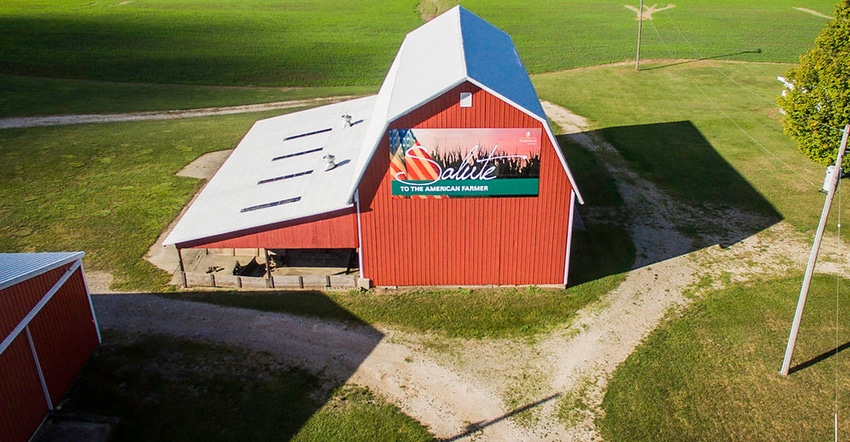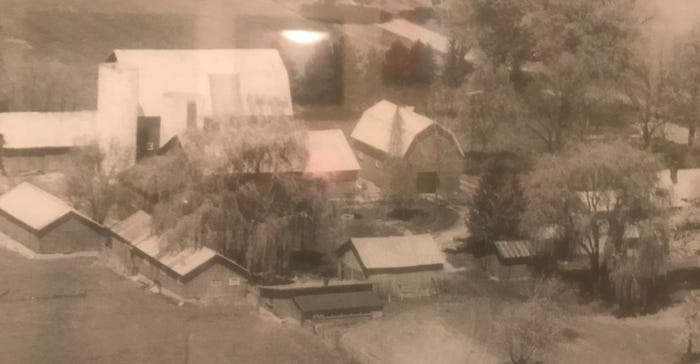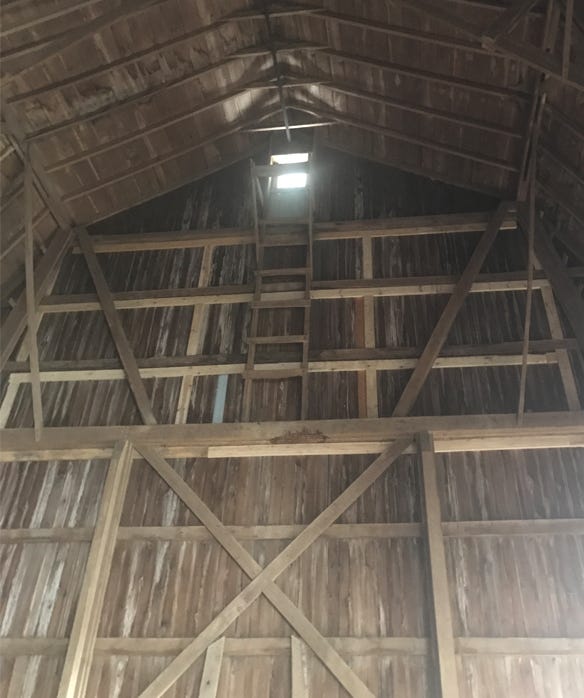July 20, 2018

Some things were simply meant to be. How else can you explain the fact that Deb and Jim Blair just happened to be driving south of Mason on a June day in 2013 and just happened to notice an auction sign beside an old farmstead. An open house just happened to be the following day and they just happened to fall completely in love with the property — Deb with the house and Jim with the gambrel-roof barn.
Of course, the rest is history. A week later they bought the property, and five years later they remain in love with it.
Jim shares information from Pete Stid, who knows the farm like the back of his hand, having lived there for many years, and from Harlan Whipple, barn historian and repairman who has barns in his DNA.
The plank-frame barn was built between 1934 and 1936 by Earl Whipple, Harlan’s grandfather, and Earl’s son Russell. The barn was built for L.B. Barr and his wife, Sylvia, who used it for raising sheep, until selling the farm in October 1963 to brothers Joe and Pete Stid.
The following year, Harlan Whipple, having learned the art of barn-building from his grandfather, built a 30-by-60-foot lean-to and poured concrete for both the lean-to and in the main barn.
 AS IT WAS: The Blair barn in the early years.
AS IT WAS: The Blair barn in the early years.

“The Stids had a farrow to finish-hog operation,” Jim says. “In the late 1970s, they added a 160-by-28-foot finishing barn while continuing to use the main barn and its lean-to from 1964 until the price of hogs dropped to 10 cents a pound in the early 1990s, ending their work with livestock. The 1960s, in fact, were a decade of demise for many Michigan farms, including many outstanding dairy operations.
The following year they tore out most of the hay mow and adapted the barn for equipment storage. New roofing and siding were installed in 2005. “We did additional work in 2015 to add structural support to the inside of the barn,” Jim says. “In 2017, work was done on the lean-to.”
One of the actions taken when many farmsteads are sold or divided among family members as part of estate planning is to separate the house and barn from the land. In too many cases, this leaves the new owner with a big barn but not enough land to have options for the continued use of the barn for livestock, crop farming, gardening or even good access for storage. As a result, many barns fall into ruin or are destroyed.
“When we bought the farmstead,” Jim says, “we bought the 22 acres around the buildings, and since then have purchased the 40 acres across the road and 13 acres to the south. We cash-rent the 20 acres around the house and buildings to a local dairy farmer who raises alfalfa. I wanted to be able to look across the alfalfa field into the woods. We cash-rent the land across the road to a corn-soybean grower.”
Today, the buildings are used for equipment storage. But that is not the end of the story.

INSIDE PEAK: Work was done in 2015 to add structural support to the inside of the barn.

Jim is happy to tell you that he has always loved old barns, adding with a smile, “I have also always loved barn signs, especially the Mail Pouch barn signs [by Harley Warrick] and the Ohio Bicentennial barns [by Scott Hagan].
“I felt I wanted to have a sign on our barn, too, so Angie Sommers, a marketing specialist at Wilbur Ellis where I work, helped me update the Salute to the American Farmer logo used by Wilbur Ellis, and had a local sign maker determine the correct dimensions, then make and transfer the logo to panels mounted to our barn. The reaction to the logo on the barn has been unbelievably positive,” Jim says. “Many are proud of our agricultural heritage and are happy to share the message by way of our barn.”
Arnett writes from Battle Creek.
About the Author(s)
You May Also Like




